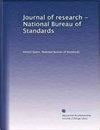Measurement of Sunlight-Induced Transient Species in Surface Waters
Journal of research of the National Bureau of Standards
Pub Date : 1988-05-01
DOI:10.6028/jres.093.047
引用次数: 4
Abstract
Sunlight irradiation of natural waters results in absorption of light by dissolved organic and inorganic compounds which then generate a variety of transient species including excited state dissolved organic materials ( 3DOM), singlet oxygen ('02), peroxy radicals (ROO-), hydroxyl radicals (HO-), solvated electrons (caq), and superoxide ion (2-) 11-125. The transient nature of these species causes both the practical aspects of and philosophy behind their determination to be different from those of conventional, more stable aquatic pollutants. Firstly, transients cannot be concentrated, separated from the water matrix, or the water removed from the light source, and therefore their analysis must be performed by indirect kinetic or integrative techniques. Secondly, they do not pose a human health concern because no significant exposure route exists. Ecological effects on lower organisms are possible [13] but none has been documented to date. The primary reason for their interest is that they can affect transformation of natural and manmade compounds. Such transformation can be beneficial, such as in the detoxification of pesticides [141, harmful, such as in the production of toxic peroxidic compounds in the photo-oxidation of crude oils [15], or simply of interest for the understanding of biogeochemical cycles, such as in the cycling of sulfur, nitrogen, and humic materials on geological time scales. Their quantitation allows prediction of environmental fate dynamics, and is of interest in water treatment processes where external sources of transients are added [16,17]. In order to understand how to measure transients, it is necessary to have some understanding of the factors which control their formation and consumption. Figure I and table I give an overview of some of the main processes involved. The bulk (-99%) of sunlight absorbed by DOM is converted directly to heat. About 1% of the initially formed excited state 'DOM undergoes intersystem crossing to the longer-lived 3DOM, which transfers the energy to oxygen to form 1O2, the majority of which, in turn, decays by heating the water. A small fraction of 3DOM transfers an electron to oxygen to produce 02-, which decays by disproportionation and some unknown reactions [12]. A minute fraction of excited state DOM ejects an electron, which is consumed rapidly by dissolved oxygen or possibly by nitrate. The radical cation formed by electron ejection may react with oxygen to form peroxy radicals, or these may be formed by addition of ground state oxygen to excited carbonyls yielding a biradical地表水中阳光诱导瞬态物种的测量
天然水体的阳光照射导致溶解的有机和无机化合物吸收光,然后产生各种瞬态物质,包括激发态溶解的有机物质(3DOM)、单线态氧('02)、过氧自由基(ROO-)、羟基自由基(HO-)、溶剂化电子(caq)和超氧离子(2-)11-125。这些物种的短暂性导致它们的决定背后的实践和哲学方面与传统的、更稳定的水生污染物不同。首先,瞬态不能浓缩,不能从水基质中分离,也不能从光源中除去水,因此它们的分析必须通过间接动力学或综合技术进行。其次,它们不构成人类健康问题,因为不存在重大的接触途径。对低等生物的生态影响是可能的,但迄今为止还没有文献记载。他们感兴趣的主要原因是它们可以影响天然和人造化合物的转化。这种转化可以是有益的,例如在杀虫剂的解毒中[141],也可以是有害的,例如在原油的光氧化中产生有毒的过氧化物[10],或者仅仅是对生物地球化学循环的理解感兴趣,例如在地质时间尺度上硫、氮和腐殖物质的循环。它们的定量可以预测环境命运动态,并且在添加外部瞬态源的水处理过程中具有重要意义[16,17]。为了了解如何测量瞬变,有必要对控制瞬变形成和消耗的因素有一些了解。图1和表1概述了所涉及的一些主要过程。DOM吸收的大部分(-99%)阳光直接转化为热量。最初形成的激发态DOM中约有1%经历了系统间的跨越,变成了寿命更长的3DOM, 3DOM将能量传递给氧气,形成1O2,而其中大部分则通过加热水而衰变。3DOM的一小部分将一个电子转移到氧上产生02-,02-通过歧化和一些未知的反应衰变。激发态DOM的一小部分会射出一个电子,这个电子会被溶解氧或硝酸盐迅速消耗掉。由电子喷射形成的自由基阳离子可以与氧反应形成过氧自由基,或者这些自由基可以通过将基态氧添加到激发的羰基上生成双自由基而形成
本文章由计算机程序翻译,如有差异,请以英文原文为准。
求助全文
约1分钟内获得全文
求助全文

 求助内容:
求助内容: 应助结果提醒方式:
应助结果提醒方式:


